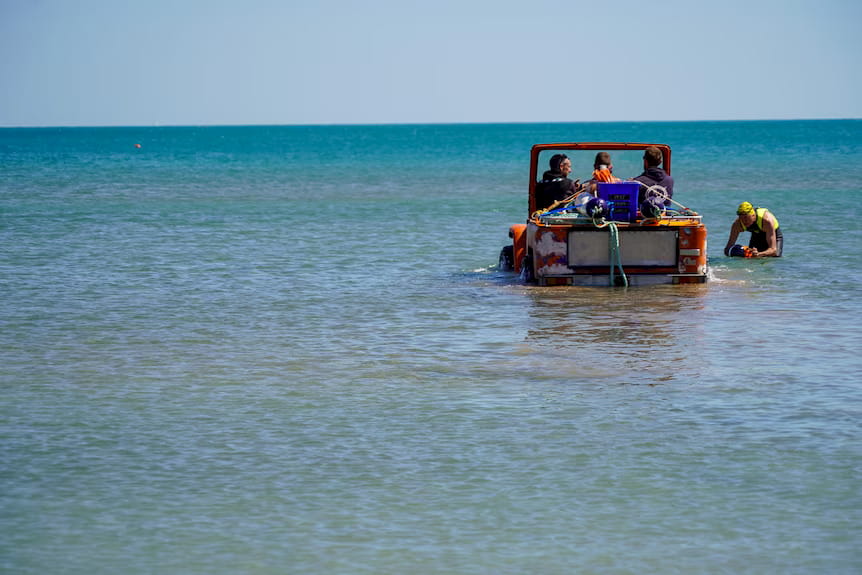
Who says EVs can’t plow through water? A team of engineers, commercial divers, and enthusiasts successfully drove an electric retrofit Toyota LandCruiser across Darwin Harbour, an over 4 mile (7 km) trip. The EV was submerged entirely underwater, navigating depths up to nearly 100 feet (30 m).
Electric LandCruiser travels 4 miles underwater
You heard that right. The team converted a 1987 Toyota LandCruiser to an all-electric underwater powerhouse.
However, the story started 40 years ago when the same LandCruiser attempted the run but failed after hitting a rock less than 2 miles (3 km) in. The unfinished SUV project was bought for $5,000 (via Unsealed4x4), picking up the name “Mudcrab.”
Tom Lawrence, who launched the project, said it’s named the Mudcrab “because it’s orange and crawls along the bottom of the Darwin Harbor.”
Lawrence and others like Glen Summers, an electrical engineer, heard of the story growing up, which drew them to the project.
Three of the team members worked as electrical engineers in Silicon Valley, one being a former Tesla employee.
TV personality behind Aussie Salvage Squad, Luke Purdy, said the project was “the opportunity of a lifetime” and really three projects in one.

Meet the EV that traveled underwater
“First we had to build an electric car. Then build an underwater car and restore a LandCruiser,” Purdy explained.
Submerging a car comes with several hurdles, which kept the team busy “understanding the theory of what happens with pressure and what happens to oxygen underwater,” as well as keeping key components dry.
For this reason, the 37-inch tires are filled with water so they can handle the pressure of being nearly 100 feet (30 m) underwater.
The primary focus was to keep everything simple with one task in mind – crossing the Darwin Harbour underwater.

The electric LandCruiser is powered by a 32 kWh battery pack. Although that’s about half the average EV battery pack size, it’s enough to get the job done without adding too much.
Due to its instant torque, the electric motor can make it easier to move underwater than a gas-powered one. Meanwhile, the electric motor is a NetGain HyPer9, a popular choice for mid to light EV conversions.
The powertrain provides 88 kW power and 162 lb-ft of instant torque. Mounted on the front of the gearbox, the electric motor is protected from water with “innovative engineering techniques.” Purdy explained, “We basically put a garbage tin over the top of it and saturated it with silicon oil” to keep the electrons moving.
Not everything needed to be sealed. “The transmission and diffs can handle water,” Purdy said. “So we’ve gone for an open system because it’s easier.” Instead, the team opted to fill many drive components with food-grade grease to lubricate and keep seawater out of unwanted areas.
Once the electric LandCruiser was ready, it was time to send it underwater. A team of roughly 30 divers took turns driving the submerged EV for about 15 minutes each, reaching depths of up to nearly 100 feet (30 m).
The trip was anything but easy. The team entered Darwin Harbour around 9 a.m. Saturday, four hours later, barely clearing the descent with so much mud, silt, and sand swelling the Mudcrabs tires.
Using inflatable buoys chained to the car, the team lifted the car out of the mud each time. They expected to resurface around 4 p.m. to 5 p.m., but the journey took nearly 12 hours. But they did it, appearing before a cheering crowd around 9 p.m.
We don’t recommend this at home, but the Tesla Model S did float well enough to turn into a boat in this 2016 video.
Source: ABC News Australia, unsealed4x4.com.au
Author: Peter Johnson
Source: Electrek



